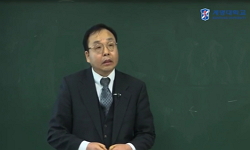This study aims to analyze the diplomatic and strategic language exchanged between North Korea and China during the leadership of Kim Jong-un and Xi Jinping. The research covers a 12-year period from 2013 to 2024 and categorizes North Korea–China re...
http://chineseinput.net/에서 pinyin(병음)방식으로 중국어를 변환할 수 있습니다.
변환된 중국어를 복사하여 사용하시면 됩니다.
- 中文 을 입력하시려면 zhongwen을 입력하시고 space를누르시면됩니다.
- 北京 을 입력하시려면 beijing을 입력하시고 space를 누르시면 됩니다.

김정은・시진핑 시기 외교적 수사와 북중관계의 전략적 상이성 = Diplomatic Rhetoric and Strategic Divergence in North Korea-China Relations during the Kim Jong-un and Xi Jinping Era
한글로보기부가정보
다국어 초록 (Multilingual Abstract)
This study aims to analyze the diplomatic and strategic language exchanged between North Korea and China during the leadership of Kim Jong-un and Xi Jinping. The research covers a 12-year period from 2013 to 2024 and categorizes North Korea–China relations into three phases: periods of conflict, rapprochement, and status quo. It examines the shifts in diplomatic rhetoric and certain strategic narratives in each phase. The analysis confirms that diplomatic rhetoric and strategic narratives have undergone significant changes in response to international and regional developments as well as shifts in bilateral relations. During periods of conflict, the frequency of traditional rhetoric emphasizing friendly relations significantly declined, and certain narratives were altered or undermined. In contrast, during periods of rapprochement, a form of resilience was observed as friendly rhetoric and narratives were reinstated. In the status quo phase, while both countries continued to employ amicable rhetoric, differences in emphasis and frequency became apparent based on their respective strategic positions. Nevertheless, a structural gap stemming from strategic divergence persisted regardless of the nature of bilateral relations. China has consistently sought to restrain North Korea’s military adventurism and encourage its focus on economic development, whereas North Korea has emphasized the need to maintain a balance of terror and leverage great power conflicts to enhance its bargaining power. These differences have been a fundamental source of recurrent tensions and constrained cooperation in North Korea–China relations.
동일학술지(권/호) 다른 논문
-
애증의 북중관계를 보는 분석의 틀: 구체와 추상의 변증
- 경남대학교 극동문제연구소
- 이희옥
- 2025
- KCI등재
-
북핵 문제와 중국의 전략적 내러티브: 대북 정책 정당화와 국제안보질서의 재구성
- 경남대학교 극동문제연구소
- 강수정
- 2025
- KCI등재
-
- 경남대학교 극동문제연구소
- 김한권
- 2025
- KCI등재
-
전망이론과 김정은 시기 북한의 대중정책: 대중 자율성을 중심으로
- 경남대학교 극동문제연구소
- 정해인
- 2025
- KCI등재




 KCI
KCI DBpia
DBpia


